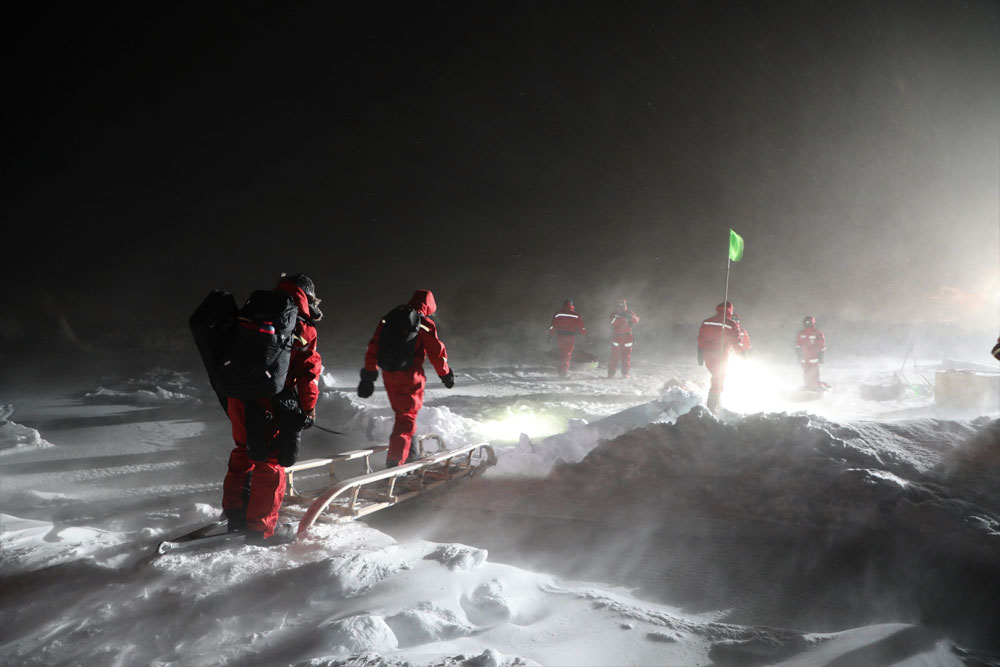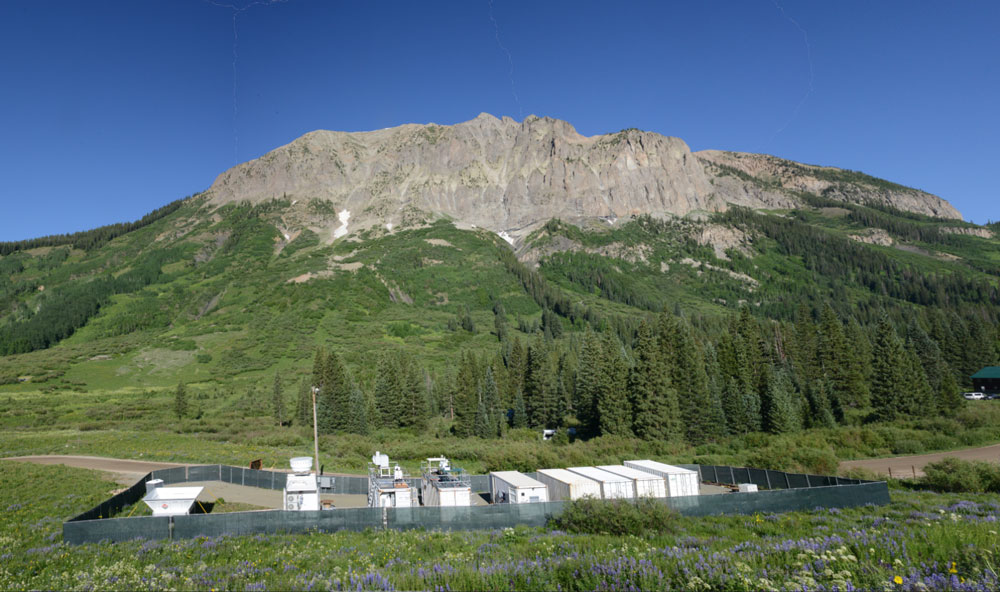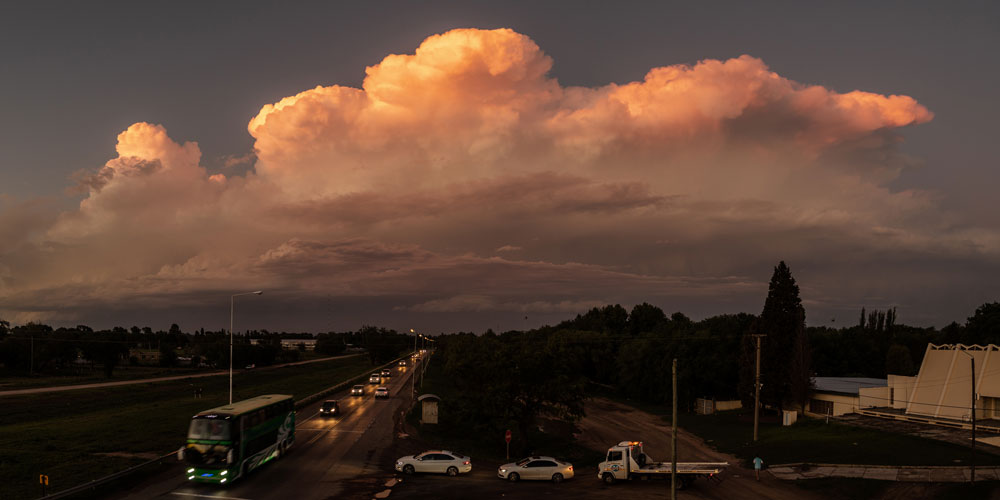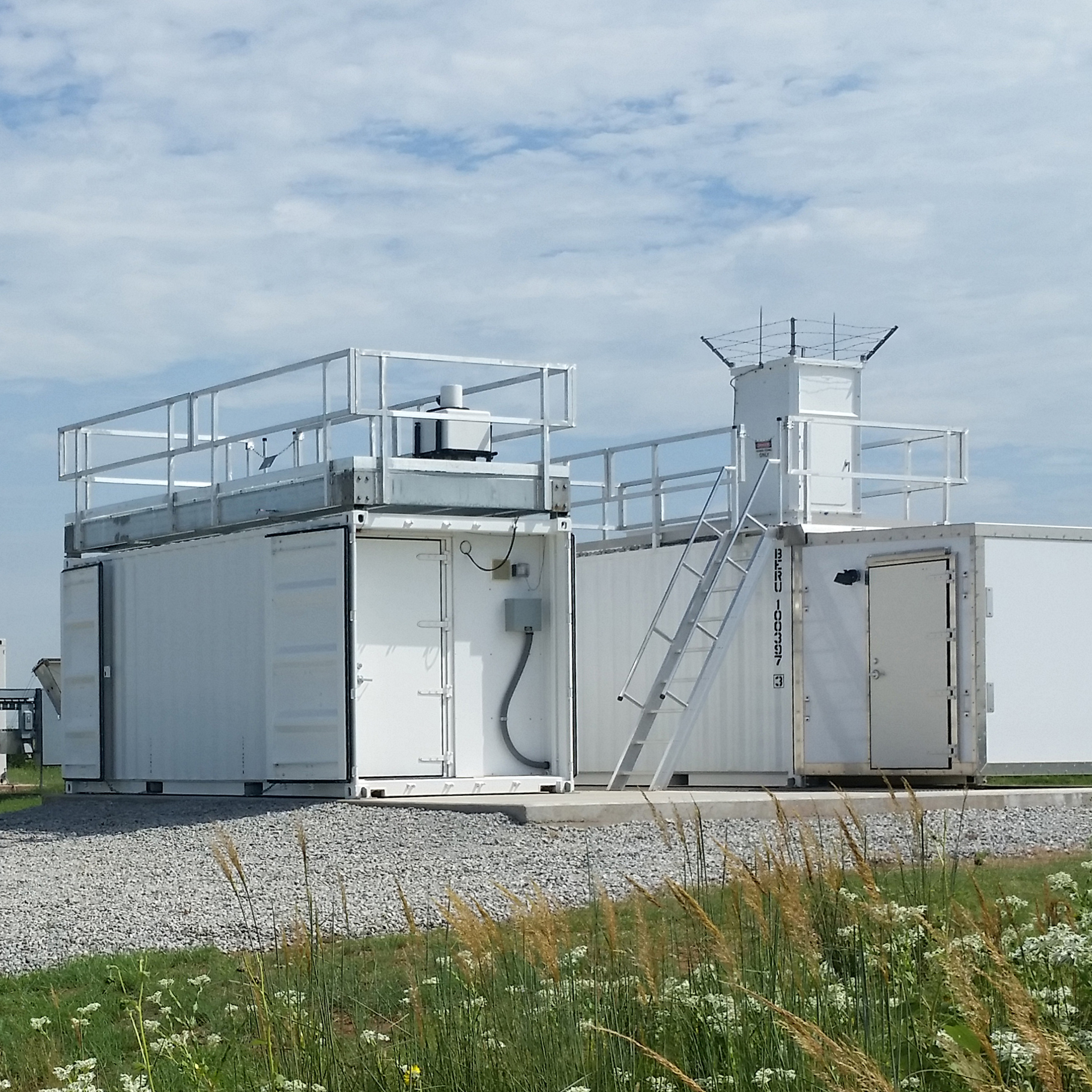2021 ARM/ASR Meeting Documents Research Progress in Pandemic
Published: 21 July 2021
Hundreds of community members log on for annual meeting

With the COVID-19 pandemic stretching into 2021, the Joint Atmospheric Radiation Measurement (ARM) User Facility/Atmospheric System Research (ASR) Principal Investigators Meeting took place online for the second consecutive year. The joint meeting consisted of four half-days from Monday, June 21, to Thursday, June 24.
Attendance of the annual meeting of ARM users, ARM infrastructure staff, and ASR-funded scientists tracked closely with last year. The opening-day plenary sessions, featuring programmatic updates and science talks, drew 468 attendees from 14 countries.
Understandably, the pandemic was top of mind during the plenaries.
Gary Geernaert, director of the Earth and Environmental Systems Sciences Division within the U.S. Department of Energy’s (DOE) Biological and Environmental Research program, ticked off a few key achievements for ARM and ASR in the pandemic year. He highlighted two completed field campaigns in the Arctic; ARM’s successful Triennial Review, held in November 2020; and new campaigns starting soon in Colorado and Texas.
Geernaert also noted that the presidential budget request for fiscal year 2022 (October 2021 through September 2022) signaled likely increases for ARM and ASR. “The outlook looks really good for how the Administration views climate science and the work we do,” he said.
While there have been bright spots during the pandemic, including a boost in funding awards for ASR research proposals in 2020, ASR Program Managers Shaima Nasiri and Jeff Stehr acknowledged that it has been a difficult time for many. They encouraged scientists to reach out if they need help with their grants or research.
On the ARM side, the pandemic created a backlog of delayed campaigns, including the TRacking Aerosol Convection interactions ExpeRiment (TRACER) in the Houston, Texas, area. TRACER is now scheduled to begin October 1, six months later than originally planned.
“We’re trying to do our best to catch up with these deferred campaigns, but we realize there are impacts to your research,” said ARM Program Manager Sally McFarlane. (If you have questions about your campaign, please contact the appropriate site manager.)
McFarlane also acknowledged the significant efforts of ARM staff to identify new ways of accomplishing their work remotely to keep ARM data flowing despite the challenges of the past 15 months.
From ASR to ARM and Back Again

The programmatic updates from Nasiri, Stehr, McFarlane, and ARM Technical Director Jim Mather also included news on ASR funding, ARM value-added product releases, and ARM instrument additions and upgrades.
For those interested in submitting ARM campaign proposals, McFarlane anticipates that a pre-proposal call will open this fall for scientists wanting to use the second ARM Mobile Facility for a deployment starting around January 2024. A call for tethered balloon system flights will likely open in January 2022 for campaigns in fiscal year 2023 (October 2022 through September 2023).
After the programmatic updates and the announcement of the third annual ARM Service Awards, two principal investigators gave science talks about projects intended to contribute to future generations of DOE’s Energy Exascale Earth System Model (E3SM). These talks highlighted links between ARM/ASR science and the Earth and Environmental System Modeling program.
Po-Lun Ma of Pacific Northwest National Laboratory in Washington state presented a framework designed to improve the representation of aerosols and aerosol-cloud interactions in E3SM. Peter Caldwell of Lawrence Livermore National Laboratory in California discussed the E3SM team’s goal to develop a high-resolution atmospheric model that can run on graphics processing unit hardware. Both projects will rely on ARM observations for testing and comparisons and expect to make new modeling capabilities available to the community.
The opening day also included a two-hour block of presentations from ASR working groups. The four groups—Aerosol Processes, Convective Processes, High-Latitude Processes, and Warm Boundary Layer Processes—are associated with ASR research priorities. Each group had 30 minutes to share research progress and data product updates relevant to its focus area.
Exploring Past and Future Campaigns

The 2021 meeting featured 12 breakout sessions that allowed participants to dive deeper into specific scientific and technical topics. Four breakout sessions ran in parallel during a two-hour block each day from June 22 to 24.
Breakout sessions included findings and data products from past ARM field campaigns. The 2019–2020 Multidisciplinary Drifting Observatory for the Study of Arctic Climate (MOSAiC) expedition, a massive international effort in the central Arctic, got its own session. Matthew Shupe, the expedition’s co-coordinator, presented the first MOSAiC results on cloud-atmosphere impacts on the central Arctic’s surface energy budget. Jessie Creamean of Colorado State University shared early details on the seasonal variability of ice-nucleating particles and their sources as seen during MOSAiC.
A session about observations and modeling of high-latitude marine postfrontal clouds focused on three campaigns:
- the Macquarie Island Cloud and Radiation Experiment (MICRE), 2016–2018
- Measurements of Aerosols, Radiation, and Clouds over the Southern Ocean (MARCUS), 2017–2018
- the Cold-Air Outbreaks in the Marine Boundary Layer Experiment (COMBLE) in Norway, 2019–2020.
In other breakout sessions, researchers discussed upcoming campaigns in different stages of the planning process.
One session zeroed in on the 2023–2024 Eastern Pacific Cloud Aerosol Precipitation Experiment (EPCAPE) near San Diego, California. EPCAPE will study the characteristics of stratocumulus clouds through ARM data collected on a coastal pier and a mountain slightly inland. After an overview of the science plan by the campaign’s principal investigator, Lynn Russell, the presentation segued into science highlight talks by EPCAPE co-investigators.
Another session looked at community needs from the 21-month Surface Atmosphere Integrated Field Laboratory (SAIL) campaign, which starts September 1 near Crested Butte, Colorado. This session also explored a complementary campaign that will start near SAIL in the East River Watershed in the fall of 2021—the NOAA-supported Study of Precipitation, the Lower Atmosphere and Surface for Hydrometeorology (SPLASH). SAIL/SPLASH investigators continue to seek out additional collaboration opportunities.
A Look at Science Processes and Technology

Two breakout sessions jumped into deep convection—one on aerosol processes and the other on understanding the deep convection life cycle through measurements and modeling. Both sessions featured presentations by William Gustafson, the lead principal investigator for the Large-Eddy Simulation (LES) ARM Symbiotic Simulation and Observation (LASSO) activity.
For its next scenario of focus, the LASSO team will tackle deep convection based on the 2018–2019 Cloud, Aerosol, and Complex Terrain Interactions (CACTI) field campaign in Argentina. (The LASSO team will hold a virtual community session July 28 to provide details and solicit feedback about the LASSO-CACTI scenario.)
A session on representing secondary organic aerosol processes across scales broke into “sub-breakout sessions” to discuss measurement needs for the future ARM Mobile Facility deployment in the Southeastern United States and translating measurements to mechanisms in models. Attendees also learned more about the upcoming U.S. ARM mobile deployments in the Southeast, Texas, and Colorado during a session on interactions among the land surface, convective boundary layer, clouds, and aerosols.

This year’s joint meeting also featured breakout sessions focused on instrument updates and data applications.
A session on lidar applications brought attendees up to speed on ARM lidar systems, related value-added products, and how researchers are using lidar data. During a session about shortwave radiometers, conveners solicited feedback from attendees regarding broadband shortwave radiometer upgrades and the possibility of a shortwave spectral radiometer intercomparison.
A session on ARM aerosol measurements provided updates on aerosol instruments and data products, chemistry measurements at ARM’s Southern Great Plains and Eastern North Atlantic atmospheric observatories, and measurement priorities at the North Slope of Alaska observatory. Attendees also discussed how to coordinate intensive operational periods for studying aerosols. This type of sampling strategy would fulfill a recommendation from the ARM Aerosol Measurement Science Group.
Another session provided a broad overview of how machine learning (ML) is being applied within ARM and ASR as well as externally. The first three talks looked at ML for radar data quality, detecting drizzle occurrence in warm marine clouds, and models for rapid geophysical forecasting. Attendees also received updates on DOE’s Artificial Intelligence for Earth System Predictability (AI4ESP) initiative, a National Science Foundation AI institute, and ARM high-performance computing improvements that will help with ML/AI projects, including a new Cumulus cluster coming online this summer.
New Elements
The 2021 agenda included some different elements from the 2020 online meeting.
In 2021, meeting organizers brought back poster sessions by taking advantage of virtual technology. Each poster had its own space, or channel, on Slack. In their Slack channel, the presenter could upload their poster for viewing and chat with meeting attendees during—or outside of—their scheduled poster session. Some poster presenters set up video chats for an experience more like an in-person meeting.
In all, participants submitted 223 posters in the following areas:
- ARM field campaigns
- ARM infrastructure
- boundary-layer structure
- convective clouds, including aerosol interactions
- high-latitude clouds and aerosols
- warm low clouds, including aerosol interactions
- absorbing aerosol
- aerosol, cloud, and/or precipitation microphysics
- general topics, including ones related to aerosols and clouds.
Slack channels were also available for networking and discussing ARM data, breakout sessions, plenaries, and general topics.

Another new feature in 2021 was informal networking sessions. Participants joined the sessions on the Wonder video conferencing platform, where they popped onto a screen made to look like a large meeting space, such as a hotel lobby or dining hall. There, participants gathered in circles of 15 people or fewer to talk about the day’s sessions, meet new colleagues, and catch up with peers.
During the Early Career networking session, attendees shared challenges that early career scientists have been facing in meeting people, gaining scientific exposure, and building collaborations since the turn to all-virtual meetings.
Catch Up With the Meeting
If you missed some or all of the joint meeting, presentation slides from the plenary and breakout sessions are published on the meeting agenda web page. Video recordings of some breakout sessions will also be available on the page.
Those interested in posters can check out the full poster gallery, including abstracts. Meeting attendees can access the Slack discussion channels until the end of July.
If you have not yet submitted your presentation or breakout session summary report, please do so now.
Keep up with the Atmospheric Observer
Updates on ARM news, events, and opportunities delivered to your inbox
ARM User Profile
ARM welcomes users from all institutions and nations. A free ARM user account is needed to access ARM data.


















